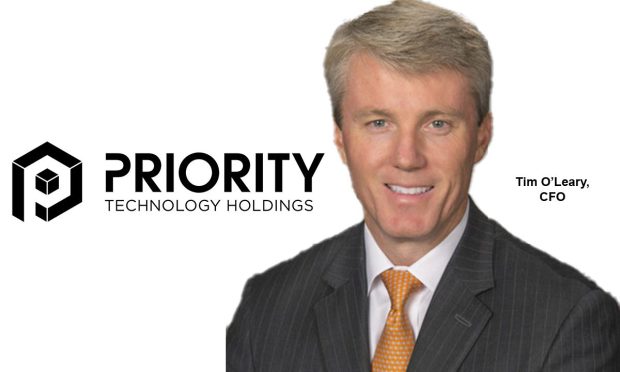Priority Technology’s New CFO Pick Reflects Role’s Strategic Importance

Tim O’Leary, the new chief financial officer at Priority Technology Holdings, faces a dual challenge: He is joining a new company, and he is also new to the role of CFO.
The appointment reflects a growing shift in the marketplace. Faced with unprecedented economic and go-to-business challenges, more and more companies of all sizes and stages of maturity are taking a creative look at the role of CFO. As a result, the job has transcended its traditional boundaries and has become far more strategic in nature.
O’Leary has more than 20 years of capital markets and banking experience — primarily focused in the technology sector. Most recently, he led financings for several payment and technology companies — including Priority — as managing director and group head of the technology, media and telecom leveraged finance team at Truist Securities.
“We are excited to have Tim join Priority,” Priority CEO Thomas C. Priore said in a statement. “His deep experience raising capital for technology companies, coupled with his extensive financial expertise and leadership, make him an excellent fit for this key role at Priority as we continue to achieve great results and execute on our transformative growth strategies.”
Priority offers commercial and Banking-as-a-Service solutions that let customers use a single platform to collect, store and send money at scale, as well as manage their accounts.
Amid these shifts, O’Leary shared his perspectives on the tandem challenges of joining a new firm in a new role in an interview with PYMNTS.
“I am very excited to join the Priority team,” O’Leary commented. “Having had the opportunity to work with Priority from the capital markets perspective, I remain impressed by their continued strong performance and management team. I look forward to working with such a great group and helping to execute on the company’s growth strategy.”
New to the Role of CFO
The vast majority of O’Leary’s career has been spent in leveraged finance — working both with issuers in the technology sector as well as private equity firms working on financing, buyouts, add-on acquisitions, recapitalizations, refinancing and other types of capitalizing activities.
“So, I’ve not been in the CFO role, but have worked with a lot of CFOs throughout my 20-plus-year career, mostly in the technology sector,” he said. “I’m definitely looking forward to the transition. It’ll have its challenges and things I haven’t even thought of yet, but I’m looking forward to getting in there and spending more time with the team and learning the role.”
See also: Digital Disruptors Need CFOs Who Can Build Teams and Infrastructure
According to O’Leary, it’s a business that’s performing very well. He looks forward to coming in and learning more about the business from the inside.
“Obviously, my focus historically has been around capital markets and a lot of financing activities,” he added. “So, I think there are things to do on that side of the business with the capital structure and partnering with the rest of the C-suite and thinking about strategy and where to take the business from here.”
Challenges of Being Publicly Traded Versus Privately Held
O’Leary sees dual challenges to the role of the CFO of a publicly-traded company, as Priority is listed on the Nasdaq.
“Certainly, there’s the SEC regulations and reporting and all the external investors you work with,” he said. “I’ll have to come in and work with the team and understand all those nuances from a reporting and regulation standpoint, but I’m fully confident the team that’s there has been doing that well.”
As to investor relations, he believes his experience helping position companies in the payments and technology sector will serve him well.
Related: Banking-as-a-Service Helps Speed FinTechs Time to Market
Massive Growth Opportunity
According to O’Leary, “The vast majority of B2B payments are still done by paper. So, I think it’s early stages, and grabbing market share and having the appropriate technology to help with the transition is critical. I view that as a big, continued growth opportunity for not only Priority, but for the industry.”
He noted that the biggest obstacle to payment automation is simple inertia.
“I think like most things it’s inertia, people who’ve gotten used to doing something one way and it’s hard to change. As people change, those activities may change as well,” he said. “So, as companies transition workforces, you may see continued acceleration of that move to electronic payments.”
The key, in his view, is to show them there are simple ways to do things electronically that won’t disrupt their existing processes.
For all PYMNTS B2B coverage, subscribe to the daily B2B Newsletter.
